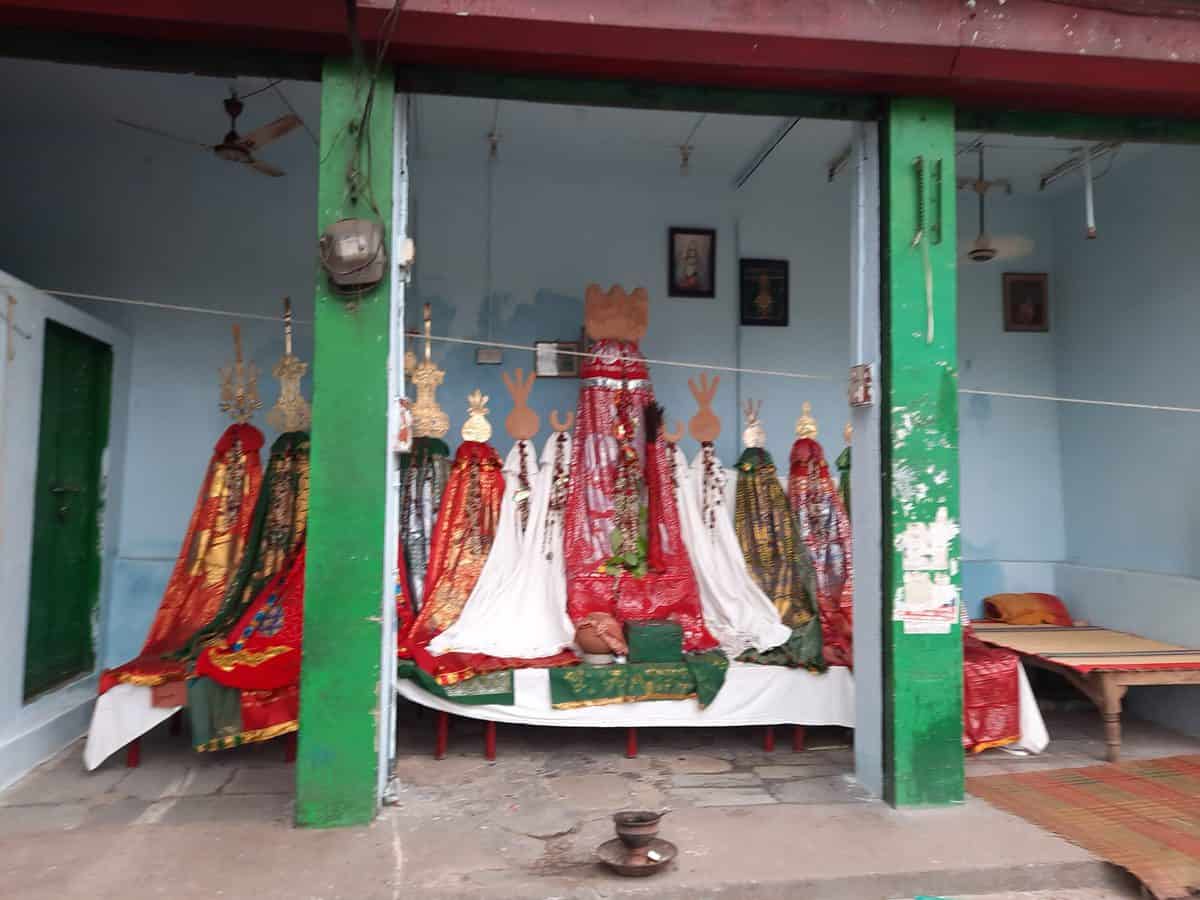Hyderabad: One of Hyderabad’s most notable religious and socio-cultural events is Muharram, the first month of Islamic calendar when Hazrat Hussain, the grandson of Prophet Muhammad and his companions had been put to sword in the Iraqi city of Karbala.
Though the city is making do with diluted rituals in light of the pandemic, still there are numerous people who are in mourning the way they have been all their lives.
Be it the maatams (mourning sessions)or the Bibi ka alawa procession, the magnitude in which Hyderabad goes about its customs during the month of mourning is perhaps only surpassed by Lucknow.
Even with corona pandemic at its peak, devotees can be seen clad in black paying their respects to alams in ashurkhanas spread out across Old City. Right across from Badshahi Ashurkhana, it is hard to miss a row of 12 alams.
However, these are not hoisted by regular Muslims, be it Shia or Sunni. The area bestrewn with these symbols of Karbala was once a larger part of the interiors of large spacious haveli. That too, one which is inhabited by hijras (eunuchs) since the Asaf Jahi era.
Amidst the hustle and bustle of this Ghansi Bazar street, sandwiched between shops stands a nondescript dwelling that could pass of as any Old City residence. After getting a look at these relics symbolic of the tragedy that befell Imam Hussain during Karbala, an acquaintance named Hyder Razvi asks one of the inhabitants, Haaji Sabir, introduce their Guru, Haji Guru Munni Naik.
Venturing away into the abode, I am introduced to Naik.
Transcending sectarian squabbles as many of her previous generations had been doing, “Hussain was our Imam and he sacrificed a lot for the humanity.”
They also plan on going to Kufa and Karbala, the cities in Iraq. They have already been to Makkah and Madina for Hajj, the annual pilgrimage.
Upon inquiring about the name that hovers above the alams outside, “Jaffer Baksh,” she replies with enthusiasm “Who Humara Guru Hai.”
A Sentry Sanctuary
This dwelling which serves as the abode for these eunuchs or transgender is one that was allotted to them by a jagirdar during the Nizam’s days. In an era where eunuchs were known as trusted sentries of palaces and palatial residences, Baksh was particularly fond of one of his guards.
Out of this fondness, he allotted this particular building to one of his trusted eunuchs. This then became a sanctuary for other ones as well. Before leaving for Pakistan at the time of independence-partition, he ensured that the property would remain a sanctuary for hijras.
Today, those who live in the place which is known hijron ki haveli are surviving on pension from the government. Even though they would like to also partake in another Muharram tradition of reading nauhas (lamentations that recall the violent, tragic events of Karbala), they cannot for one reason.
None of the current dwellers can read any language.
Because one of their late Gurus who could read Urdu used to lead these recitations, they used to follow along.
Now with nobody to read nauhas, they are making do with the installing alams outside their home. They alams will be taken out in a procession on 10th of Muharram which falls on Saturday.

